- 4 minute read
- Digital Marketing
- Email Marketing
3 Ways to Take Your Email Communications to The Next Level
Beginner,
Intermediate
Get a behind-the-scenes-look into FareHarbor's 2024 season
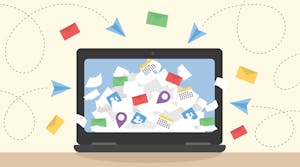
There are so many ways to use email campaigns to achieve your marketing goals — whether you’re looking to promote brand awareness, increase conversions, or grow your revenue — that it can be difficult to know where to start.
There are three main categories of email — marketing, lifecycle, and transactional — and a variety of ways to use them to engage with customers. This guide goes over some of the most effective types of email campaigns to promote your tours or activities and how they can be implemented in your digital marketing strategy.
These are emails designed specifically to promote your offerings and create brand awareness. The goal of these emails is to get customers to book an activity or stay in touch with your company.
 Sales/Promotions
Sales/PromotionsThese emails are used to promote any specials or deals to a segmented list of your audience such as repeat customers. Promotional emails are used by many companies, which means they can be overlooked if they don’t grab the recipient’s attention. How do you stand out among the crowd?
 Newsletters
NewslettersA regularly scheduled newsletter is the easiest way to keep in touch with current and potential customers, highlight new tours and activities, link to promo codes in your FareHarbor Dashboard, and re-engage with past customers. To make your emails stand out, offer insider information specific to your industry that is valuable to your readers — like travel tips, recipes, wildlife guides, etc. — to engage with them in a meaningful way that doesn’t always have to do with bookings.
People may not book every time you send a newsletter, but it creates an association with your business and keeps you top of mind when they are ready to plan a vacation. Newsletters are also a great way to create referrals or other sharing options for a wider audience by providing content that recipients want to share.
Check out the full Compass guide to writing the ultimate email newsletter. But all newsletters should include:
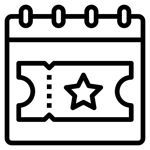 Seasonal Event Emails
Seasonal Event EmailsPromote your tours and activities during the holiday season or peak vacation periods by nudging your customers in your direction with a seasonal email. Most of your potential customers will be looking for deals or things to do with their families around the holidays, so this is the perfect time to show up in their inbox with just the tour or activity they need.
For example, if your steamboat cruise line offers a special Valentine’s Day dinner cruise, share your upcoming event in an email to generate interest. A recipient who has been wondering what to do for Valentine’s Day will jump on the opportunity to book a unique date.
Plan ahead for peak booking periods and start sending emails in advance. Remember, travelers start planning their vacations three months in advance, so an email in the early spring to promote your summer tours is a great way to stay top of mind when they’re booking their vacations. Keep the emails coming closer to the peak season to cater to last-minute planners as well.
Seasonal event emails should use specific calls to action such as:
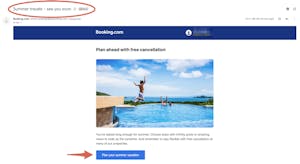
Lifecycle emails are targeted to users segmented by where they are in the customer journey. You don’t want to send the same email to someone who just discovered your company and someone who is a repeat customer, and lifecycle emails allow you to create specific communications for each segment. This allows you to provide exactly the information a customer needs wherever they are in their journey, whether it’s a welcome email that tells them about some of the great things your company offers or a special promotion just for VIP customers.
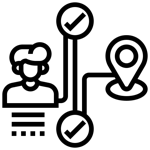 Welcome Emails
Welcome EmailsThis is your chance to make a personalized first impression with a customer. For example, if they’ve just signed up for your newsletter, a welcome email can provide information about your company and lead them to check out your most popular activity. This first point of contact with a personal touch builds trust in your company.
Welcome emails allow you to greet new customers and welcome them to your community, creating a base for potential repeat customers. A few types of welcome emails that would be useful for your business include:
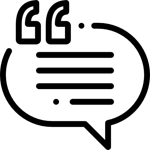 Feedback Request Emails
Feedback Request Emails Feedback requests are one of the most important types of marketing emails because reviews play such a big role in encouraging people to book with you. Travelers look at recent reviews before deciding to book with a company, so you want to ensure you have enough reviews for them to peruse. Reviews can also help with your local SEO.
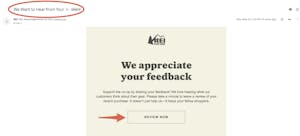
One of the best ways to accumulate reviews is to send a link to a review platform after a customer completes a tour or activity with you. Establish your trustworthiness for potential customers by collecting reviews from happy customers who just had a great experience with you. Requests for feedback can be combined with a thank you email sent right after a tour.
 Loyalty Programs
Loyalty ProgramsLoyalty programs are a great way to build brand loyalty and keep your customers engaged. Encourage them to continue to book with you by offering special deals through loyalty program emails. Some of the ways to use these emails include:
These are the emails directly related to a customer’s purchase, like booking confirmations and cart abandonment reminders. These emails are sent to individual customers to provide details about their purchase or to bring them back into the booking flow if they abandoned it.
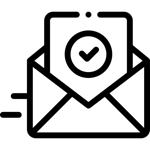 Booking Confirmations
Booking Confirmations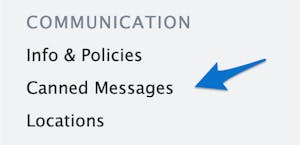
Booking confirmation emails should have all the information a customer will need on the day of their tour or activity, such as the address, parking instructions, what to bring, and any waivers they need to complete in advance.
Luckily, FareHarbor handles these emails for you. We automatically send your confirmation email and include all the relevant information you have provided on your Dashboard. You can find these under Settings > Canned Messages.
While we provide ready-made messages, it’s best to personalize these to fit your brand.
Confirmation emails should include:
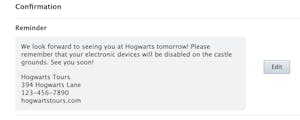
Learn more about canned emails in this guide.
Now that you understand the purpose of each type of email campaign, it’s time to get started! If you’re new to email marketing, welcome emails or newsletters are the best places to start. For more tips, explore our other email marketing guides, including a guide to email list segmentation.